There are few other countries on Earth that are as diverse as China. From the mega cities of the East Coast to the lush nature of the south, to the mountains and deserts of Western China. Today’s guest post from Mateen takes us to the Karakoram Highway between China and Pakistan, as well as Kashgar and Tashkurgan. If you want to discover more of China, read our 5 reasons to visit Yunnan post!
If there was one place, which would absolutely enthral adventure seekers with what it has to offer, it would be the Karakoram Highway.
This 1200km wonder follows the classic trail of the Silk Road, and takes the traveler on a magical journey through time, offering adventures in the world’s highest mountains, with a backdrop of lush green valleys and fast flowing rivers.
Built by collaboration between Pakistani and Chinese authorities in 1960’s, to seal everlasting friendship between the two countries, the highway starts in the city of Kashgar in Western China and follows the classic silk trade route toward the south-western part of China.
This part of the Silk Road was responsible for the spread of Buddhism into China and Tibet, and later of progressive Islamic philosophies – philosophies which later laid foundation of the European renaissance – deep into the Indian Subcontinent.
Fast forwarding to the nineteenth century and into the Great Game era, this route was frequented by Russian and British spies, frequenting the route as traders and travelers and spying for their masters.
Here is a brief guide to traversing the Karakoram Highway safely and cheaply, and what you must not miss at any cost along your journey, in order to have a rich and fulfilling experience.
Visit Kashgar: A Journey through Time
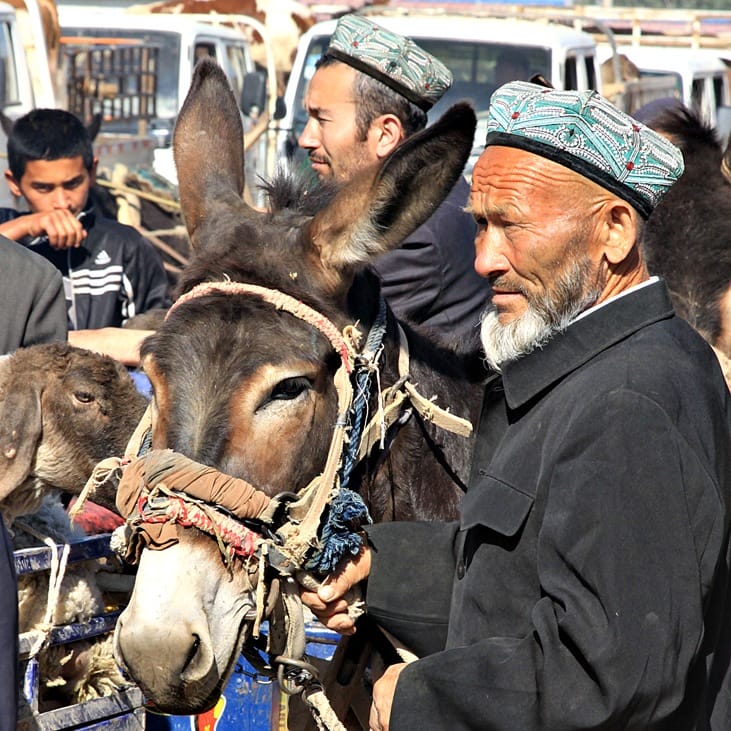
Kashgar, also known as Kashi, was once an oasis at the edge of the vast and formidable Taklimakan desert. Kashgar was a metropolis long before the word metropolis was conceived.
It was the starting point of the Silk Route, which meant that it brought traders from as far as Europe, who rested at this oasis before moving onwards. Take a trip down the bazar, and you might hear the traces of its multicultural past in the various languages being spoken, and see visions of its tradition in the form of craftsmen working on ceramics that were once the face of this part of the world.
What to See and Do in Kashgar
The old city still carries traces of the Golden era of Kashgar when it was a bustling marketplace where traders rested after crossing the treacherous and deadly Taklimakan desert.
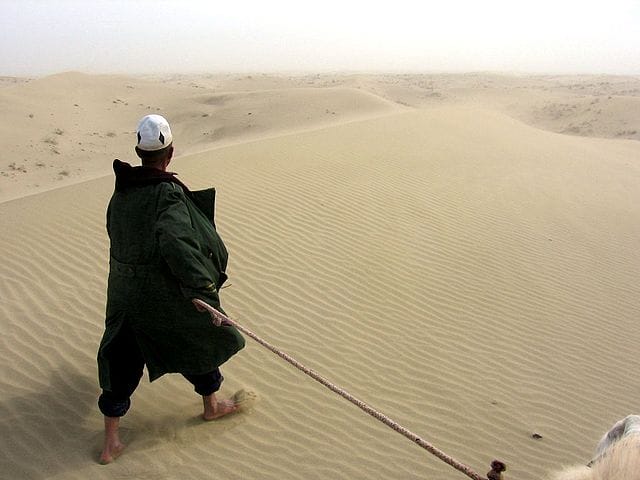
The Chinese government is slowly bulldozing down the old city to make way for modern buildings. What remains, however, still smells and looks like old Kashgar. You will see old houses, built in traditional style and occupied by families, who have lived here for centuries, and some ceramic shops where craftsmen keep on making high quality ceramic pots and tiles.
If you are lucky to be in Kashgar on a Sunday, you can visit the Sunday market. Every Sunday the herders and farmers travel to Kashgar with their livestock hoping to make a fortune. By lunchtime the market is filled with sounds of all kinds of animals, from goats and sheep to camels, horses and donkeys.
As the buyers start to arrive, sellers start calling out to buyers, and hustling begins. You can see fingers being pointed, and arguments getting intense. It seems as though there is going to be a fight, but turns out that is just how haggling is done here.
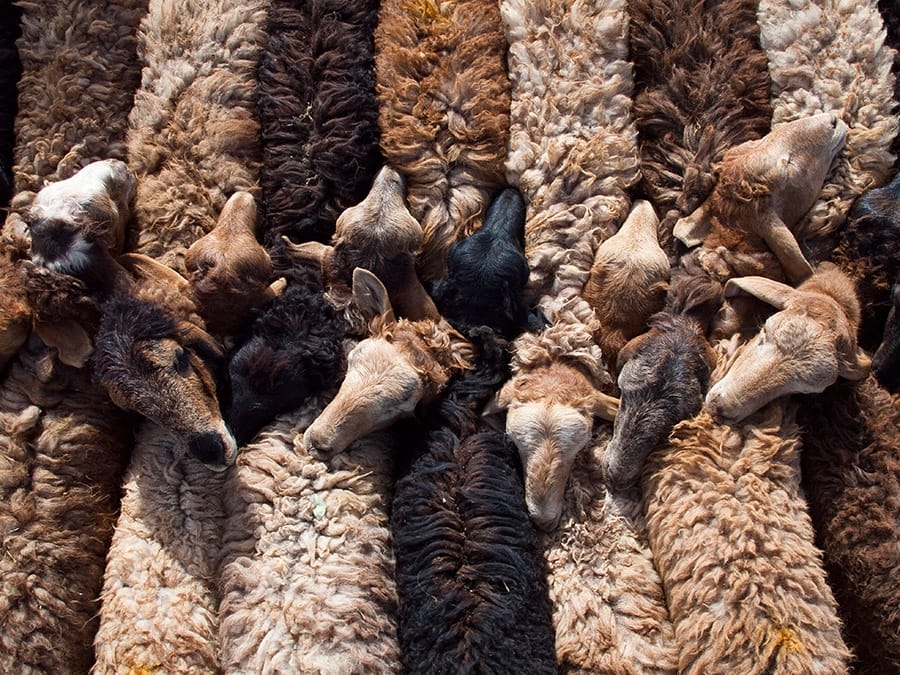
For those who, like me, want to delve in the history and culture even more deeply should definitely take a day trip to Mor Pagoda on the outskirts of the city. Mor Pagoda was the sight of a magnificent Buddhist stupa that was once carved with beautiful figurines and was an active site for Buddhist pilgrims.
Although today the carvings have faded away, the pyramid-like structure of the stupa remains. Id Kah mosque, which lies at the center of the old city, is similar. If you manage to make it to the mosque in time for the Friday prayers, you will see a spectacle of up to 10,000 worshippers praying at once, which makes it the largest gathering of Friday prayers for miles.
The cold Taklimakan desert is easily accessible through Kashgar. An expedition through the Taklimakan desert truly takes you back into the era of silk route, when traders would brave the cold weather of this desert to make their fortunes.
Where to Stay in Kashgar
Kashgar is welcoming and hospitable to budget travelers. The old town is filled with youth hostels that are excellent for both solo travelers looking for backpackers hangouts, and budget travelers who are looking for quality time. I would recommend hostels because I have had a lot of fun there.
What to Eat in Kashgar
As European voyagers and adventurers discovered more and more trade routes, the silk route started losing its prominence. Kashgar, however, never lost its prominence. Even in modern China, it is a gateway to Central Asia, and the starting point of the Karakoram Highway, which still makes it an important trade center. Kashgar, therefore, still lies on prominent modern trade routes, and you can enjoy a variety of dishes hailing from Pakistan, Central Asia and Turkey.
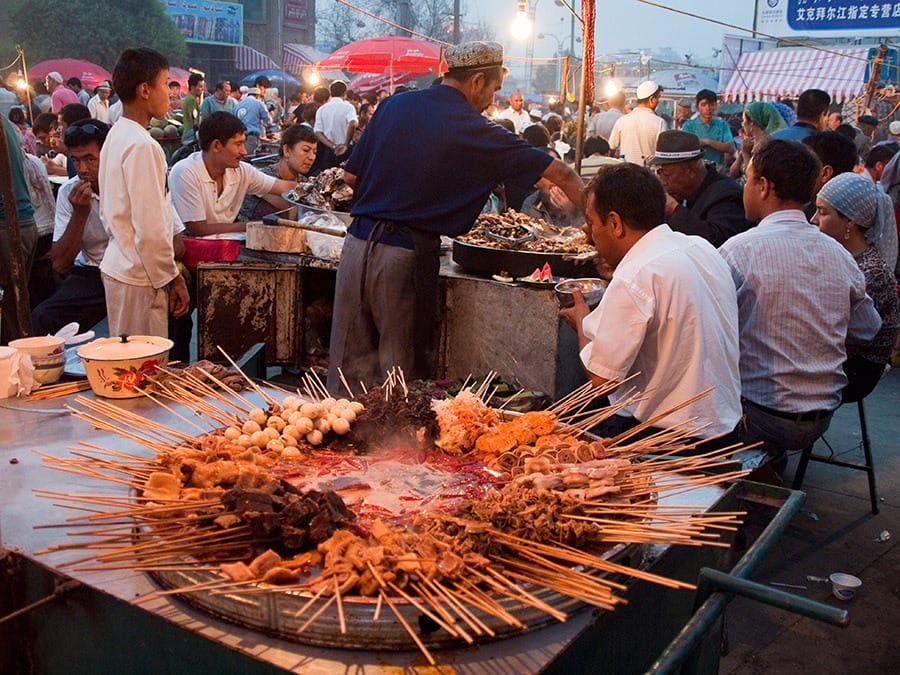
The area around the Id Kah mosque, which is a landmark of old Kashgar, is the perfect place to sample kebabs, chapattis (traditional bread from Pakistan and India), and mantee (central Asian dumplings), along with traditional Chinese food.
Where is Tashkurgan?
The next stop on the Karakoram Highway after Kashgar is Tashkurgan, and from there the road rises as it enters the Pamir Mountains, following the classic route that the Silk Road traders used to enter the Indian subcontinent and sail to the Far East.
As you leave the cities behind, the highway zigzags through rugged mountains, which are made of an enchanting mixture of red, orange and sandy rocks.
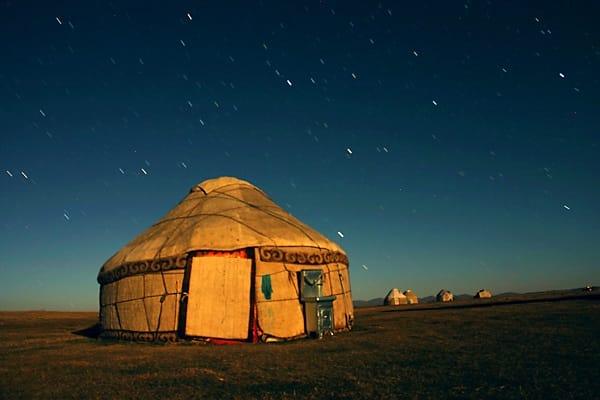
These are the foothills of the Pamir Mountains, which extend into the Central Asia. The passes through these mountains were the favored route of conquerors and warriors seeking to conquer the Southern lands of Afghanistan and now Pakistan.
The highway only touches the Pamirs. At Keluge Ate, the highway turns abruptly towars the West, cutting deeper though the mighty Karakoram. The peaks start getting higher, rugged and, for the adventure seekers, beautiful.
15 kilometers before Tashkurgan is the Karakul Lake, which lined with huts of Uyghurs, traditional Xinjiang nomad people. The huts are fully portable, enabling these nomads to pack up and move at a short notice.
What to See and Do in Tashkurgan
Staying in a traditional Uyghur Yurt is a must. Nomad families occupy the coast of the Karakul Lake, and you can stay in a Yurt for a night, enjoy traditional food, and take a couple of pictures with naïve Xinjiang camels. You will be amazed by their hospitality.
Where to Stay in Tashkurgan
Staying in a Uyghur yurt is not only a unique experience but also cheap. The family you are staying with will provide you food, water and a place to stay. I recommend tipping them generously as these people are very poor, and have limited resources.
What to Eat in Tashkurgan
If you plan to stay at Tashkurgan, you will have no trouble. Tashkurgan is the border town frequented by traders and truckers. Therefore, you can expect to find top quality roadside food at a reasonable price.

The Karakoram Highway – Onwards to Pakistan
After Tashkurgan, the highway enters Pakistan from the Khunjerab pass, the highest border crossing in the world. Due to extreme height and the unpredictable weather of the Karakoram, this border crossing is only open for 4 months of the summer. From here, you enter deeper into the Karakorum, leaving behind the ancient cities of the Chinese part of the Silk Road. But, for the thrill seekers and those who are looking for something else, this is where the adventure starts. Pakistan offers some of the world’s highest mountains for climbers seeking to truly challenge themselves.
Notes on the author of this post: Mateen Asad is an engineer from Pakistan, who loves travel, photography, and social dynamics. He loves to travel to travel independently as it enables him to emerse in the daily life at his destination deeply!

Wow that looks like an incredible ‘road’ trip! The highway looks so tiny in that first photo, you can totally imagine all the neat finds and adventures you will have along the way. If I went I’d try to plan around a sunday so I could check out that market!
It was great to learn a little bit about a part of the world that I really don’t know that much about! It looks amazing though. Thank you for sharing!
Looks like an interesting place… there’s so much to see and learn in China. It’s such a diverse country!
What a neat travel experience this must be! That food market looks like a bustling place. Such a unique destination!
Guys you know I love your pictures! Yet another great examples!
That donkey looks totally fabulous!!!
Always been a fond lover of road trips so this is right up my street for sure! I love the picture of the Taklamakan Desert, but I think its the diverse nature of landscape and cultural identity that makes China stand out among many other Asian (and global) counterparts.